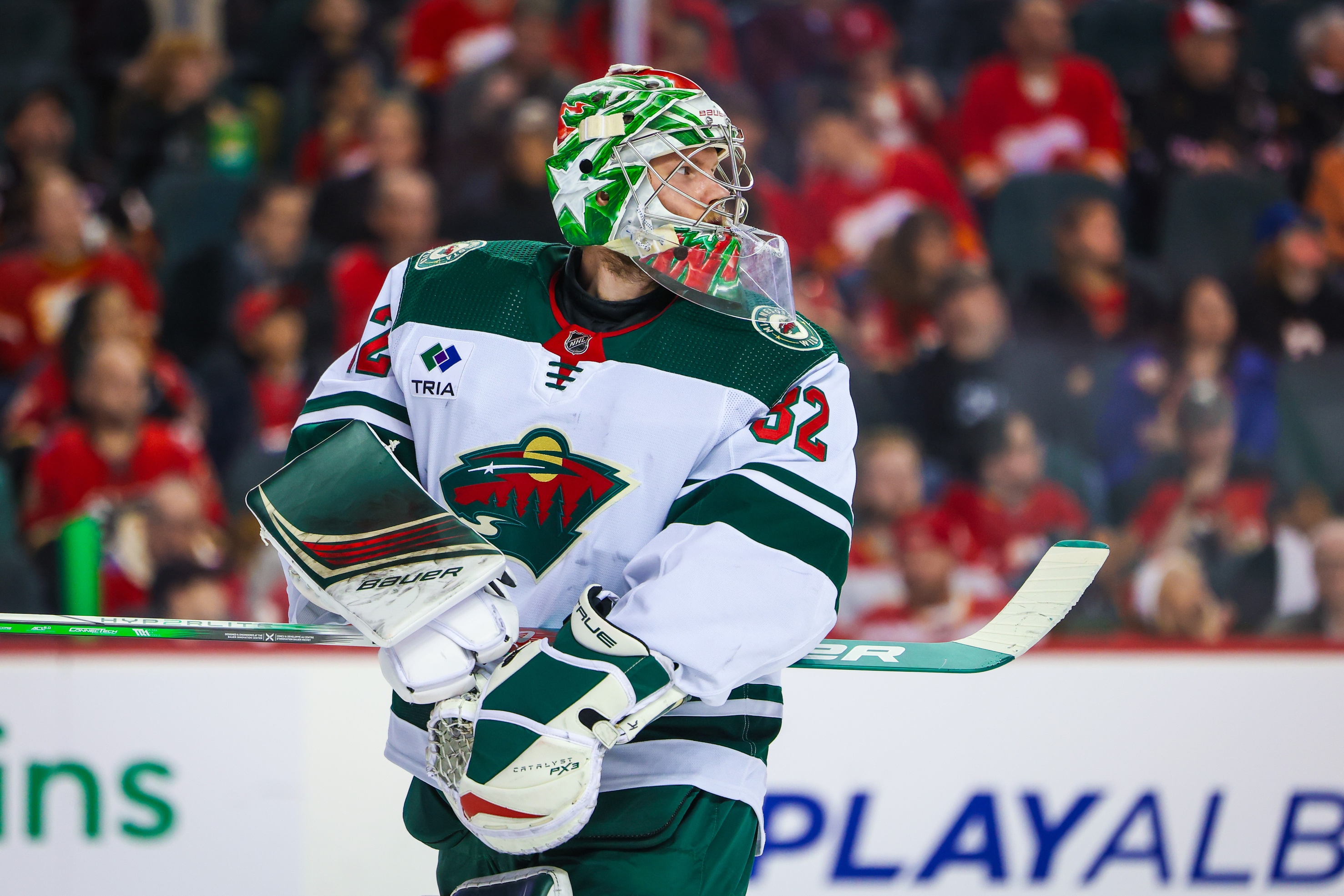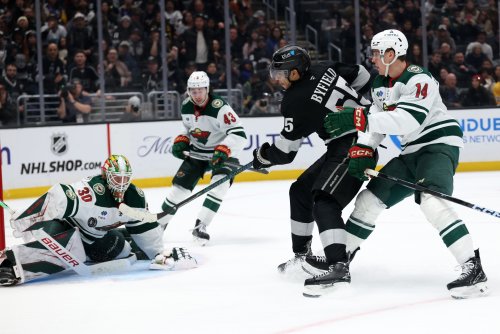
Napoleon Bonaparte famously said: “Soldiers generally win battles. Generals get credit for them.” It’s rare to quote a Frenchman on hockey, let alone one who died before the game was invented. But it always comes to mind when discussing NHL coaching for two reasons
The first is obvious: the players’ preparation and performance are always more important than the guy behind the bench. Beyond that, though, consider the source of the quote. Napoleon’s strategies revolutionized recruitment and warfare, which can’t be ignored when explaining his success.
So, whether we’re discussing a battlefield or a sheet of ice, how do we determine if the coach is doing a good job?
The best tool to answer that question is a combination of film and analytics. We have thoroughly broken down John Hynes’s tactical improvements at Hockey Wilderness, including his penalty kill structure. Hynes’s adjustment is twofold: the forwards help defend their blue line in transition, and they defend the sweet spot in their own zone. He asks them to be less aggressive than Evason’s penalty kill but not too passive to achieve this.
Under Hynes, the Wild have surrendered only three goals on their 24 penalty kills, an 87.5% success rate. That’s an unsustainable pace. It would have led the NHL last year. Minnesota was dreadful at killing penalties this season before Bill Guerin relieved Dean Evason of his coaching duties. When a team improves that quickly, the most likely explanation is a hot string of goaltending. That raises the question, did Hynes’s new tactics even play a part?
It’s no secret that Filip Gustavsson and Marc-Andre Fleury have turned their shorthanded performance around after Hynes arrived. But the team also seems to be playing better in front of its goaltenders. We can determine that by separating defensive play from goaltending performance.
The analytics that best isolate goaltending play use expected goals, a statistic based on shot location. Statisticians record every NHL shot by location and track every previous event (for example, a pass, deflection, or save). That provides a lot of useful information to answer important questions. How far apart were the events, how fast did the puck get to the shooter, and how much did the goaltender’s angle change?
All these factors influence how hard it is to save the shot, and harder shots are given a higher probability of scoring. A shot with a 40% chance to score would be worth 0.4 “expected goals” (xG). A shot with a 40% chance of going in would be a very high xG value for just one shot.
Good penalty kills limit these shots by covering dangerous passing options, blocking shots, or clearing the puck from their zone. When a shorthanded defense gives up a lot of xG, that reflects poorly on the skaters and coaches.
Based on MoneyPuck.com’s expected goals model, Minnesota’s penalty kill improved measurably after implementing a new system. The Wild have given up 12% fewer four-on-five xG per minute than Evason’s 2023-24 squad.
Evason’s penalty kills prevented low-danger chances better than the new system, but Hynes makes up for that with a safer shorthanded strategy. The new system has reduced medium-danger (8 to 20% chance of a goal) and high-danger (more than 20%) shots, which drives the overall reduction in scoring danger.
That’s especially exciting because it matches what Minnesota wants to do on film. By dropping the forwards deeper into the zone, opposing power plays only have room to operate from the point. In other words, Hynes’s plan is working.
Even more noteworthy is that while Hynes’s structure has reduced the count of shot attempts by 8%, that doesn’t fully capture the team’s improvement. That means that Hynes’ new system prioritizes shot quality rather than shot quantity. Evason’s all-or-nothing approach led to more dangerous chances for opposing power plays.
In some cases, Evason’s pressure was productive. Minnesota ranked third in the NHL with 14 shorties last year. Still, if Hynes’s squad sacrifices all 14 of those for this new system, the Wild are on track to save around 8 expected goals if they take the same number of penalties this year as last year. That’s a pretty close figure.
Other considerations affect this data, many of which favor Hynes. For example, Hynes has played only two of seven games at home. That means that opposing coaches have the last-change advantage. Opposing coaches can hand-pick their players based on the Wild’s personnel. That should lower Minnesota’s faceoff percentage, but Hynes and Evason’s squads have nearly identical faceoff percentages. It should also make the PK easier to attack, but Hynes’s group has still outperformed Evason’s by xG-against (xGA).
Another hidden benefit of the new scheme is that Minnesota has been penalized far less while killing penalties. Under Hynes, Minnesota has reduced their four-on-five penalties-per-minute by 71%. That means they don’t have to kill five-on-three power plays or remain shorthanded for more than two minutes.
Part of this drastic reduction may be the influence of a new coach -- nobody wants to be that guy with a new boss. But it’s also a credit to good positioning. Across the board, this scheme has given better results.
Still, goaltending is responsible for most of the turnaround. Just as xG can isolate defense from goaltending, they can isolate goaltending performance. By MoneyPuck’s estimation, Fleury and Gustavsson have saved about 2.76 goals above expectation (GSAx).
This means that, even after accounting for the penalty-killing improvements, Minnesota’s goaltenders have out-paced an average goaltender. If you tack those 2.76 “expected goals” onto the Hynes PK total, it estimates their performance with average goaltending. Instead of going 21 for 24, the team would be closer to 18 or 19 out of 24.
That’s only a 76% success rate, which would rank 25th in the league this year. With average goaltending, the new penalty kill is better -- but still bad.
However, these analytics overrate the goaltenders’ contributions. xG is a great tool, but statisticians calculate it in a vacuum of shots and saves. It doesn’t include a good measurement for rebound control. Goalies are responsible for their own rebounds, complicating the issue. Screens can make rebound control more difficult through no fault of the goaltender's. Furthermore, defensemen are also responsible for clearing rebounds. In other words, not all rebounds are created equal.
Minnesota’s goaltenders can’t freeze a puck to save their lives this season. They have combined for only three puck freezes while shorthanded this season. That’s almost impossibly low, considering the Wild have given up 92 power-play opportunities this season. Given the extreme poor performance, it’s safe to blame the goaltenders for most rebound issues.
Under Hynes, the rebound control has been better. That’s likely because the penalty kill applies better pressure. Fewer scoring chances mean fewer rebounds. So, in that sense, we should credit Hynes with a portion of the goaltenders’ improved rebound control.
On top of that, it’s much easier to freeze the puck on a shot from distance. For goaltenders, that’s the difference between catching a pop fly in the outfield versus a line drive in the infield. In this way, we should give Hynes’s scheme some credit for addressing the goalies’ weaknesses.
Analytics are the best tool to isolate goaltending from shooting, but they’re not perfect. The numbers seem to prove that while coaching has reduced their opponents’ scoring chances, Fleury and Gustavsson are the main reason the penalty kill looks better. Still, the little things that originate on the bench have a way of seeping into every aspect of the on-ice product. It makes them challenging to measure.
Ultimately, every member of the team contributes to each other’s success. Their job is to make each other’s job easier. Perhaps that’s why Emperor Napoleon was so willing to pass around the credit.
Think you could write a story like this? Hockey Wilderness wants you to develop your voice, find an audience, and we'll pay you to do it. Just fill out this form.
-
 2
2
-
 1
1



.thumb.jpg.3818a5c4985e878d5ecaf2e7234883d8.jpg)



Recommended Comments
Join the conversation
You can post now and register later. If you have an account, sign in now to post with your account.
Note: Your post will require moderator approval before it will be visible.